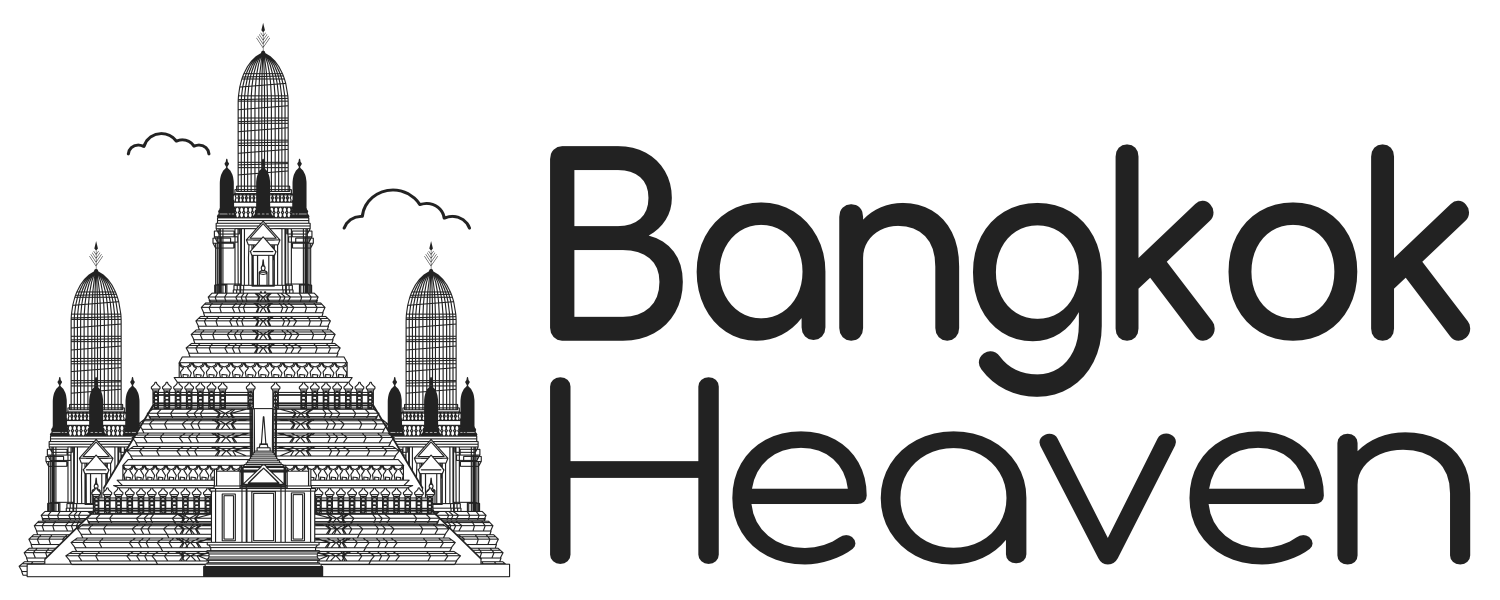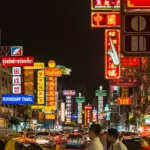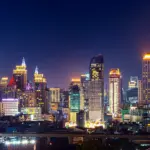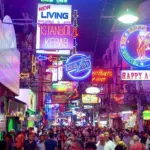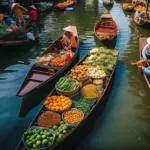Wat Phra Kaew: The Temple of the Emerald Buddha – A Sacred Gem in Bangkok
Nestled within the iconic Grand Palace complex in Bangkok, Wat Phra Kaew (also known as the Temple of the Emerald Buddha) stands as Thailand’s most sacred and revered temple. Known for its exquisite architecture and spiritual significance, this temple attracts millions of visitors each year who come to witness the beauty of the Emerald Buddha and the elaborate structures surrounding it. From the intricate carvings and golden spires to the deeply spiritual aura that fills the air, Wat Phra Kaew offers a memorable experience for both devout Buddhists and curious travelers.
- Wat Phra Kaew: The Temple of the Emerald Buddha – A Sacred Gem in Bangkok
- Historical Significance of Wat Phra Kaew
- Architectural Marvel: Design and Layout
- The Emerald Buddha: A Symbol of Thai Faith and Royalty
- Visiting Wat Phra Kaew: What to Expect
- Cultural Significance and Etiquette
- Tips for a Memorable Visit to Wat Phra Kaew
- Conclusion: Wat Phra Kaew – A Must-Visit Temple in Bangkok
This article explores the history, architecture, spiritual importance, and visitor tips for exploring Wat Phra Kaew, one of Bangkok’s top cultural landmarks.
Historical Significance of Wat Phra Kaew
Wat Phra Kaew was commissioned by King Rama I in 1782, during the founding of the Chakri Dynasty and the establishment of Bangkok as the capital of Thailand. Its construction marked the beginning of a new era and was intended as a symbol of the Thai kingdom’s prosperity and unity. Unlike most other temples in Thailand, Wat Phra Kaew does not house monks. Instead, it serves as a place for rituals and royal ceremonies, with the Emerald Buddha as its centerpiece.
The Emerald Buddha itself has a storied past, with origins that trace back to 15th-century Chiang Rai, though some legends claim it was created as early as the 1st century BC. It traveled through various locations, including Laos and Cambodia, before finally finding a permanent home in Bangkok’s Wat Phra Kaew. Today, the temple symbolizes Thailand’s dedication to Buddhism and Thai identity.
Architectural Marvel: Design and Layout
Wat Phra Kaew showcases an array of traditional Thai architectural styles, each reflecting the rich heritage and artistry of Thai craftsmen. Every structure within the temple complex is adorned with elaborate details, including intricate carvings, mosaic tiles, and statues of mythical creatures from Buddhist and Hindu mythology. Key highlights include:
1. The Ubosot (Ordination Hall): The Ubosot is the main hall and home to the Emerald Buddha. This ornately decorated structure is a stunning example of Thai architectural elegance, with its multi-tiered roof and golden details. Visitors can admire its intricate mural paintings depicting scenes from the Ramayana, a classical Thai epic.
2. The Emerald Buddha Statue: Although small (standing at just 66 cm tall), the Emerald Buddha is Thailand’s most revered religious icon. Made from a single piece of jade, the statue is clothed in seasonal attire that the king himself changes three times a year – for the summer, rainy, and winter seasons. This tradition symbolizes respect and reverence for the Emerald Buddha as a protector of the Thai nation.
3. Golden Chedis and Prangs: The temple grounds feature several stunning golden chedis (stupas) and prangs (spires) that reflect the Khmer and Thai architectural fusion. The Phra Si Rattana Chedi, for instance, is a prominent golden stupa believed to house relics of the Buddha.
4. Giant Yaksha Statues: At the entrance of the temple, visitors will find the towering yakshas, or demon guardians, who stand as protectors of the Emerald Buddha. These colorful statues, decorated with mosaics and jewels, represent mythological creatures from the Ramayana and are among the temple’s most photographed features.
5. The Phra Mondop Library: The Phra Mondop is a sacred library that houses Buddhist scriptures. With its gold-covered exterior, beautiful mosaic details, and marble base, it serves as an important repository of Thai Buddhist teachings and art.
Each architectural element and symbol in Wat Phra Kaew reflects the values, beliefs, and aesthetics of Thai culture, as well as its reverence for Buddhism.
The Emerald Buddha: A Symbol of Thai Faith and Royalty
The Emerald Buddha is the focal point of Wat Phra Kaew and symbolizes spiritual purity and protection. Although the statue’s jade-like material might lead some to believe it is made of emerald, it is actually carved from green jadeite. The statue is often associated with good fortune and is believed to bring peace, prosperity, and protection to Thailand.
Throughout the year, the attire of the Emerald Buddha changes with the seasons, each representing Thailand’s spiritual dedication. The three seasonal outfits – golden for the rainy season, diamond-studded for summer, and blue for winter – are crafted with intricate designs and precious materials, and only the king is permitted to change these garments. The ritual of changing the Buddha’s attire symbolizes the close connection between Thai royalty and Buddhism, making the Emerald Buddha both a national and spiritual treasure.
Visiting Wat Phra Kaew: What to Expect
Opening Hours: Wat Phra Kaew is open daily from 8:30 AM to 3:30 PM, making it accessible to both early risers and those who prefer to visit later in the day. However, arriving early in the morning is recommended to avoid crowds and the midday heat.
Dress Code: Visitors must adhere to a strict dress code. As this is a sacred site, shorts, sleeveless tops, and open-toe footwear are prohibited. Men should wear long pants and shirts with sleeves, while women should dress modestly with shoulders and knees covered. Sarongs can be rented near the entrance for those who need them.
Entry Fees: There is an entrance fee of approximately 500 Baht for foreign visitors, which includes access to both Wat Phra Kaew and the Grand Palace complex. Thai nationals are granted free entry, as it is a place of religious significance.
Guided Tours: For those interested in learning more about the temple’s history and significance, guided tours are available. These tours provide insight into the temple’s background, legends surrounding the Emerald Buddha, and explanations of the various architectural details and decorations. English-speaking guides can be arranged at the ticket booth, and audio guides are also available for a self-guided experience.
Photography Rules: While photography is allowed on the temple grounds, photography inside the Ubosot (the main hall with the Emerald Buddha) is prohibited. Visitors are encouraged to respect the sanctity of the space and avoid disruptive behavior.
Cultural Significance and Etiquette
Wat Phra Kaew is not just a tourist attraction; it’s a deeply revered spiritual site that holds a prominent place in Thai culture. Here are some key cultural aspects and etiquettes to keep in mind:
1. Respectful Behavior: Visitors should maintain a quiet and respectful demeanor. Avoid raising voices, laughing loudly, or using mobile phones within the temple.
2. Remove Shoes: As with most Thai temples, it is customary to remove your shoes before entering the Ubosot. This shows respect for the sanctity of the space.
3. Avoid Pointing: Pointing, especially at religious artifacts or the Emerald Buddha itself, is considered disrespectful. If you wish to gesture towards something, use an open palm instead of pointing with a finger.
4. Refrain from Touching: The structures, sculptures, and statues at Wat Phra Kaew are sacred, so avoid touching or leaning against them.
By adhering to these cultural norms, visitors can ensure a respectful experience for themselves and others.
Tips for a Memorable Visit to Wat Phra Kaew
• Arrive Early or Late in the Day: To avoid the crowds, consider arriving as soon as the temple opens or closer to closing time. Early morning visits are also ideal for cooler temperatures and better photo opportunities.
• Combine Your Visit with the Grand Palace: Wat Phra Kaew is located within the Grand Palace complex, so plan enough time to explore both. The Grand Palace offers a wealth of history, architecture, and cultural experiences that complement a visit to Wat Phra Kaew.
• Stay Hydrated: Bangkok’s tropical climate can be hot and humid, especially for those unaccustomed to it. Bring a bottle of water and consider wearing a hat or using sunscreen for sun protection.
• Take a Guided Tour for More Insight: If you’re interested in learning about the historical and cultural significance of Wat Phra Kaew, hiring a guide is highly recommended. They can provide in-depth information about the temple’s history, architecture, and the significance of the Emerald Buddha.
Conclusion: Wat Phra Kaew – A Must-Visit Temple in Bangkok
Wat Phra Kaew, with its breathtaking architecture, historical significance, and spiritual reverence, is an essential destination for anyone visiting Bangkok. The temple offers a deep insight into Thai culture and its dedication to Buddhism, serving as a testament to Thailand’s rich heritage. Whether you’re drawn to the mesmerizing beauty of the Emerald Buddha, the intricate carvings of the Ubosot, or the majestic Golden Chedis, Wat Phra Kaew promises an unforgettable experience that resonates long after your visit.
By embracing the cultural customs and taking in the awe-inspiring sights, visitors can connect with the timeless spirituality of Wat Phra Kaew and leave with memories of one of Thailand’s most cherished treasures.
